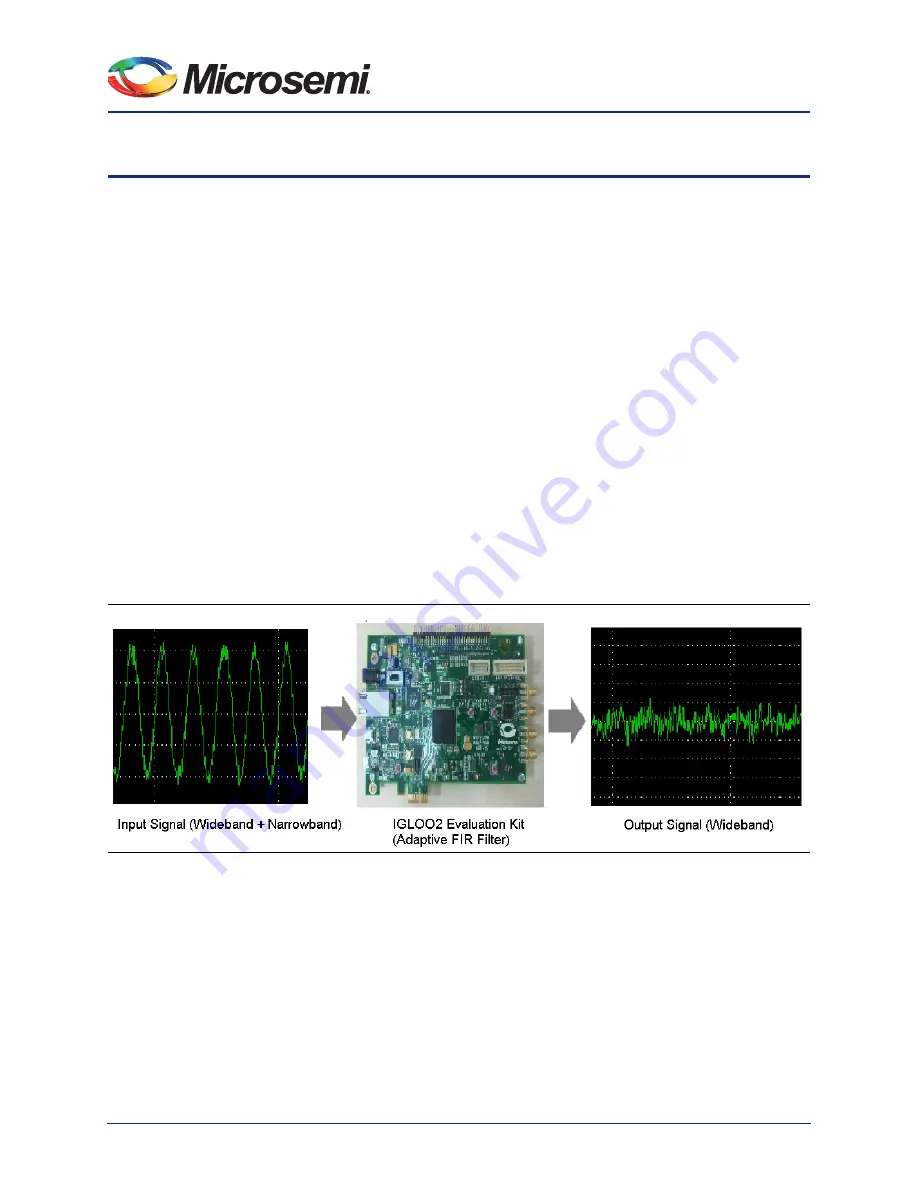
Revision 2
5
IGLOO2 FPGA Adaptive FIR Filter Demo
Introduction
The IGLOO2 FPGA devices integrate a fourth generation flash-based FPGA fabric architecture, which
includes embedded mathblocks optimized specifically for digital signal processing (DSP) applications
such as, finite impulse response (FIR) filters, infinite impulse response (IIR) filters, and fast Fourier
transform (FFT) functions.
An adaptive filter is a filter that automatically adjusts the filter coefficients according to the underlying
adaptive algorithm and the input signal characteristics. Due to its self adjustment of transfer function of
an unknown system and computational requirements, adaptive filters are widely used in different areas of
DSP application such as communication, biomedical instrumentation, audio processing, and video
processing.
The least mean square (LMS) is the basic adaptive algorithm used in adaptive filters to update the filter
coefficients. The LMS algorithm has advantages over other algorithms because of its simplicity, less
computations and best performance in terms of the number of iterations required for convergence.
In this demo an adaptive FIR filter application, the suppression of a narrow band signal interference on a
wide band signal is implemented using an IGLOO2 device. Refer to
Figure 1
.
The LMS algorithm is implemented in the FPGA fabric to adjust the filter coefficients based on the mean
square error (MSE) approach. CoreFIR IP is used to perform the filtering operation and CoreFFT IP is
used to generate the output spectrum to observe that the narrow band interfering signal component is
suppressed. The host interface is implemented in FPGA fabric using CoreUART IP to communicate with
the Host PC. A user friendly
IGL2_Adaptive_FIR_Filter.exe
generates input signals (narrow band
signal and wide band signal), and also plots the input/output waveforms and the required spectrum.
Figure 1 •
Narrowband Interference Cancellation
Superseded






































